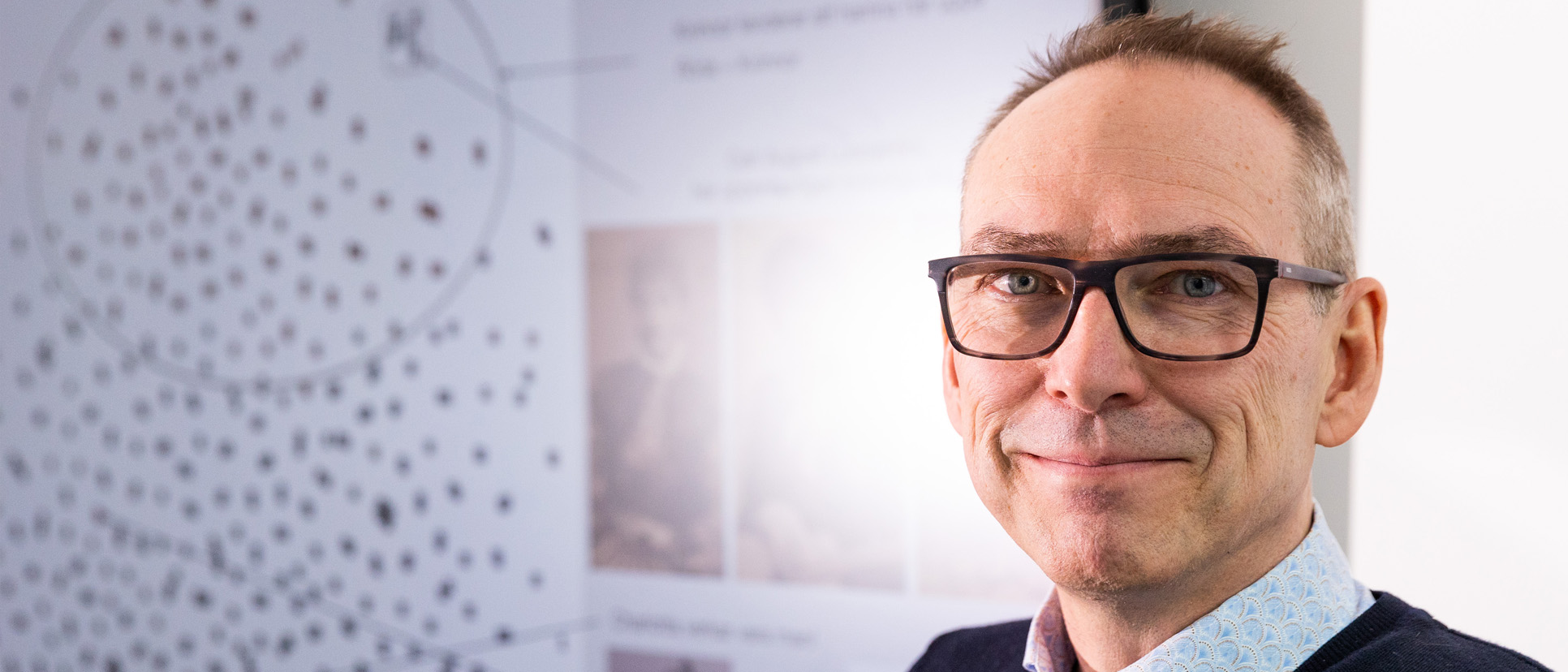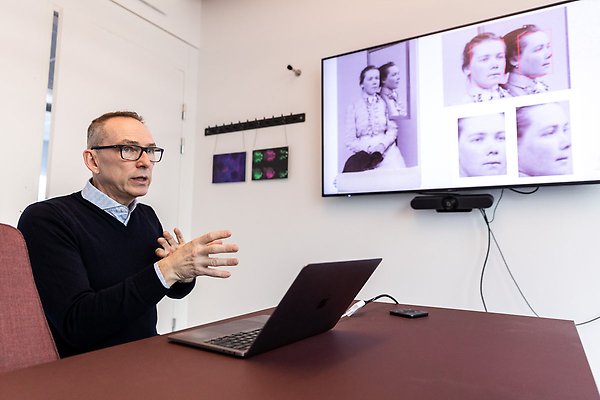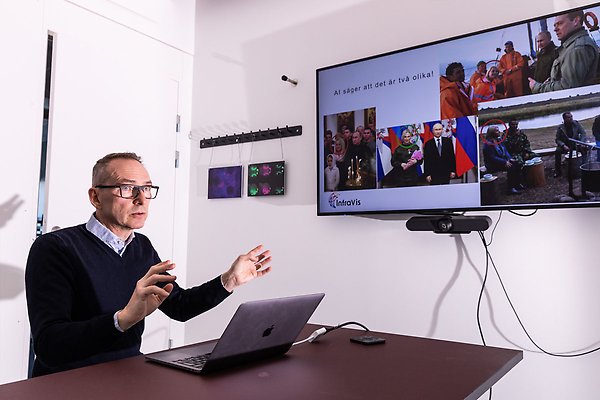His algorithm aims for better age assessments

Anders Hast has developed a method of his own for facial recognition by combining AI and old algorithms developed in the late 20th century. Photo: Tobias Sterner
Can a computer analyse a picture of a face and decide how old the person is? Anders Hast thinks it can. He is currently developing an algorithm that is intended to determine a person’s age based purely on a photo.
It is impossible to know how old someone is without knowing when they were born. The medical methods currently in use, which look at knees, teeth and collarbones, have been criticised for excessive margins of error. Yet decisions on asylum or on applicable sentencing tariffs are often based on precisely these assessments.
Anders Hast, Professor of Image Processing, is now set to investigate whether facial recognition technology can deliver a more accurate assessment. If so, a picture of a person would be enough to determine their probable age.
“I was surprised at how successfully I could determine sex using this method, so I have high hopes that I will also be able to determine age,” says Professor Hast, who works at the Department of Information Technology.
He has previously used similar algorithms to categorise historical portraits of people by biological sex. Hast’s algorithm was able to determine whether the picture portrayed a biological man or woman in 99 per cent of cases. Human assessors only succeeded in 94 per cent of the cases.

Anders Hast has used the same type of algorithm to help categorise and digitise old portraits of individuals who lived in Stockholm in the late 19th and early 20th centuries. Photo: Tobias Sterner
Based on AI
To analyse the pictures, he intends to use modern AI combined with neural networks, an older method used for character recognition, among other purposes, which was developed mainly in Finland towards the end of the 20th century. The plan is to train an AI tool by letting it look at large quantities of pictures of individuals of a certain age. This will enable the AI tool to learn what is typical of a 15-year-old boy’s face, for example. He will then combine data from the AI tool with his own algorithm, which he can easily adjust himself.
“This will make it possible to calculate an optimal mathematical mean value for how something behaves – for example, what is typical for a male or female look, or in this case, for age.”
Algorithms ignore superficial attributes such as hair and beard, and look instead at symmetries in faces. The hope is that they will discover typical characteristics for different ages.
“As human beings, we’re biased, we’re influenced by preconceptions – for example, we believe we know what people look like at different ages. Algorithms see other things, though they can also be biased, depending on how they are trained.”
It is therefore important to ensure that the AI tool is not just trained on a certain type of appearance.
“One of the tasks is to achieve as stable age recognition as possible, for men and women, and for different ethnicities.”

A few months ago, people started talking about a woman who always showed up behind Vladimir Putin. Anders Hast tried analysing several pictures and found that there were actually two different women involved.Photo: Tobias Sterner
Can recognise same person at different ages
The method he is using is already quite good at recognising people. If you take two photos of a person who has a beard in one picture and is clean-shaven in the other, it can work out that it is the same person. It can also do this whether the photo is taken front-on or in profile, or whether the person is laughing or has a neutral expression.
“In terms of age, it can recognise the same person at different ages. However, guessing the actual age, that’s the tricky bit.”
Hast reveals that he has tested the method on his own face and received the answer that he is 29 years old, which is not quite the case.
“Right now, I wouldn’t say it works well. But in five or six years, I hope we can get down to an error of no more than a year or two in 90% of cases, preferably better, of course.”
Wants to prevent judgments based on incorrect evidence
Investigating how good analysis of facial photos is at determining age is one of the sub-projects in the newly started network EB-CRIME. In the same project, researchers will also study whether a person’s DNA can provide answers about age. The aim is to investigate which method is best and to help ensure that the judicial authorities do not make decisions based on uncertain age assessments.
Hast is very hopeful that his method will work better than current medical examinations based on teeth and knees. There is far more data on faces than on knees. Moreover, it is easier to take a picture than to make a medical examination.
He says he is personally surprised how well facial recognition works and is aware that the technological advances also have their downsides.
“I don’t want my research to contribute to some kind of surveillance society. But with regard to age, I hope to be able to make a positive contribution, so that we’re not basing legal proceedings on incorrect evidence.”
Sandra Gunnarsson
